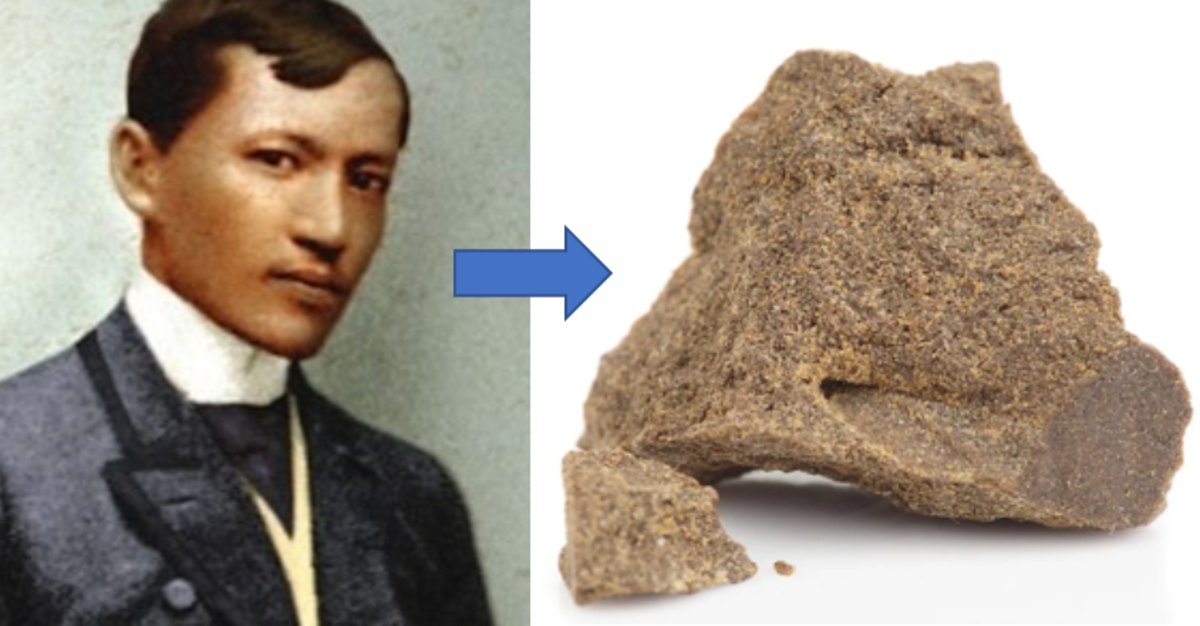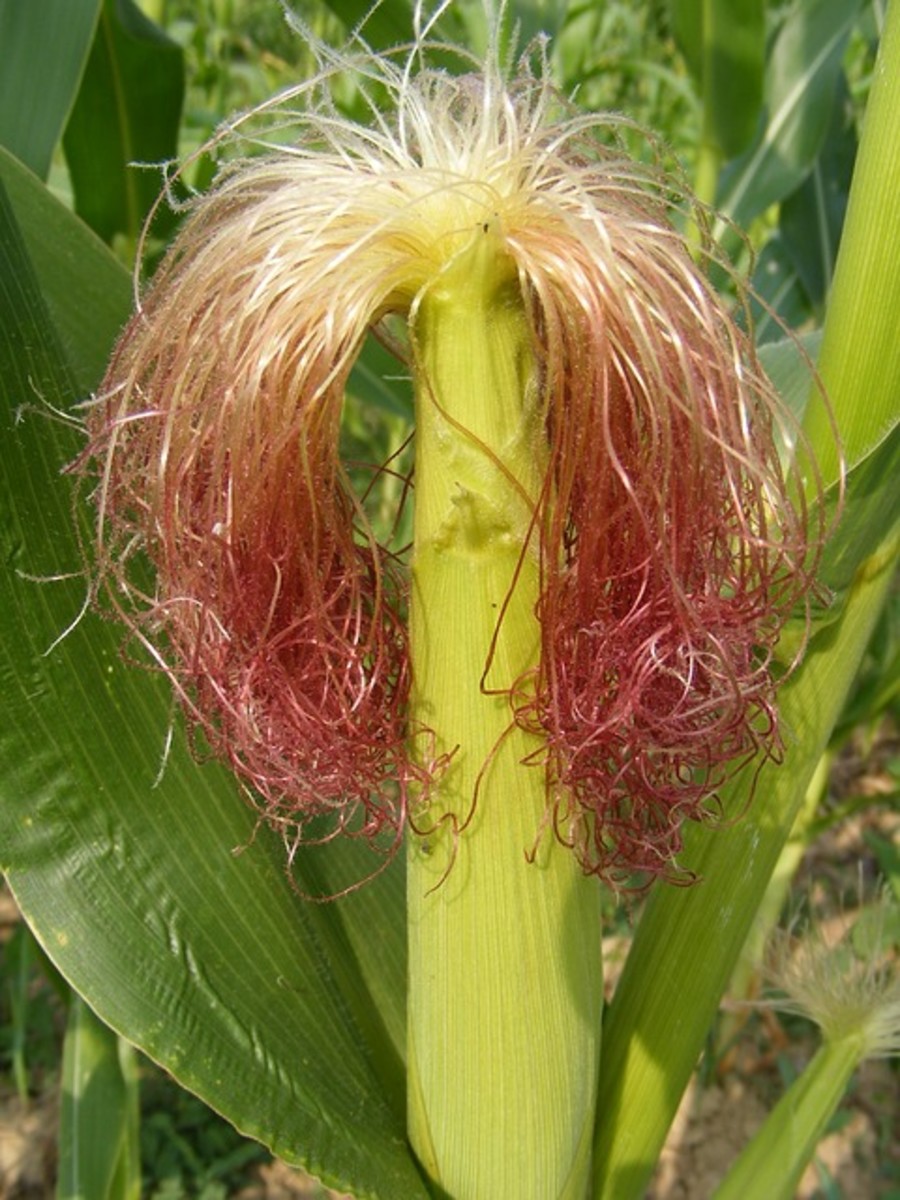What Is Cbg & Is It Good for Your Body?
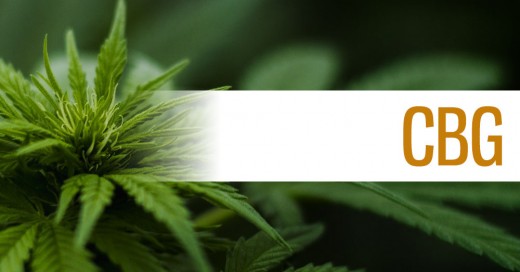
Dear CBD,
You are truly incredible stuff. Supposedly able to cure arthritis, baldness and cancer without breaking a sweat. Yet, we decided to write in order to inform you that a new cannabinoid is slowly taking the limelight. Though it may sound harsh, truth is...YOUR OLD NEWS! CBG is now our cannabinoid of choice. And the rest of this article will explain exactly what it is? How it functions? And why you should get excited?
Best Regards,
Trendsetters
What is CBG (Cannabigerol)?
Cannabigerol is another cannabinoid found in a variety of cannabis plants. Like CBD, it is non-psychoactive and could prove to have multiple, beneficial health effects (more on that later). However CBG has a different chemical structure than CBD. In fact, CBG is the precurcor chemical to both CBD and THC. (I.e CBG converts to CBD and THC as the Cannabis plant advances through its natural lifecycle). This is also why CBG is sometimes called the "mother cannabinoid" or the "stem cell cannabinoid."
How does CBG convert to other cannabinoids?
CBG is the fist cannabinoid formed in the Cannabis plant over the course of its lifecycle. It first shows up in the plant as cannabigerolic acid (CBGA). After the Cannabis plant is exposed to sufficient quantities of ultraviolet light or heat, the CBGA will convert to THCA or CBDA. Consequently since CBGA converts to either THC of CBD; a plant with more CBD will have less THC and vice versa.
How is CBG Extracted?
To extract CBG, growers typically wait until the CBG in a budding cannabis plant is at its maximum. And while timing can vary depending on a variety of factors, typically the best extraction time is 6 - 8 weeks into the plant's flowering cycle.
The plants will then generally go through 1 of 2 extraction methods.
CO2 Extraction:
This method is the most utilized extraction method. CO2 is used to distill oil from plant material. This method also separates CBG oil from other non-target chemicals.
Ethanol Extraction:
This is the least preferred method as it is more expensive and more time-consuming. After cannabis plants are soaked in ethanol, an apparatus is set up to separate the different chemical contained within the plant (including CBG). Ethanol is then burned off with heat to reveal the pure CBG product.
Benefits of Using CBG (i.e. Why Should I Care?)
Originally discovered by Israeli researchers in 1964, CBG has been the subject of various scientific inquiries over the decades. The results of these inquiries are listed below as well as possible future applications based on these results.
Controlling Bladder Problems:
Studies conducted in 2015, indicate that cannabigerol maybe a possible therapeutic agent in treating bladder problems. It appears that CBG plays some role in reducing the number of bladder contractions an individual experiences. Bladder control issues can come about as a result or aging; or they can be symptoms of larger health issues like Parkinson's disease.
Stimulating One's Appetite:
While not backed up by specific tests or studies, regular users of CBG have reported an increase in appetite either during or shortly after taking a CBG infused product. Researchers suspect that CBG may activate certain molecular pathways that stimulate appetite and digestion.
May Have VERY Strong Anti-Inflammatory Properties:
The results of early studies suggest that both CBG and CBD have strong anti-inflammatory effects. Consequently, this could indicate that topical and ingestible CBG products could be used to treat conditions ranging from arthritis, joint pain and gut inflammation.
Potentially Neuroprotective (Specifically against neurodegenerative diseases like Huntington's):
Another 2015 study indicates that CBG may be able to normalize the type of gene expression causes (or at least contributes to) brain degeneration. Of course a lot more work has to be done before any definitive claims are made.
Possible Treatment For Anxiety and Depression:
Preliminary evidence indicates that CBG may be able to boost anandamide while simultaneously inhibiting the brain's intake of gamma-Aminobutyric acid (or GABA for short). These two actions have the respective effects of improving mood and easing anxiety (along with some related symptoms). Of course, much of this is speculation (albeit by very intelligent people). More studies have to be conducted.
As A Glaucoma Treatment:
A study from 1990 points to possibly one of the clearest use cases for cannabigerol; as a glaucoma treatment. In truth, cannabis has long been hailed as a treatment option for glaucoma sufferers. However, due to years of policy limiting or banning its use; cannabis has never been a true mainstay of glaucoma treatment. This study indicated that CBG, in combination with a normally-prescribed regimen of glaucoma medications, had massive therapeutic potential. Of course, more work needs to be done to confirm all findings.
May Help Kick Cancer's Ass:
Studies in 2009, 2016 and 2014 demonstrated the potential for CBG to slow or stop the rate of cancerous tumor growth. The 2014 study in particular showed that CBG had the potential to inhibit cancerous colon cancer tumors.
Possibly Effective Against MRSA (Staph) & Other Nasty Superbugs:
If you haven't heard, the overuse of antibiotics and antimicrobial treatments has led to mutations in once easy-to-kill bacteria; prime example Methicillin-resistant Staphylococcus aureus (MRSA). Essentially, MRSA is a type of staph infection that can ruin your day or even kill you in some instances. Studies dating back to 2008 indicate that cannabigerol could be effective in inhibiting or even killing MRSA and other superbugs.
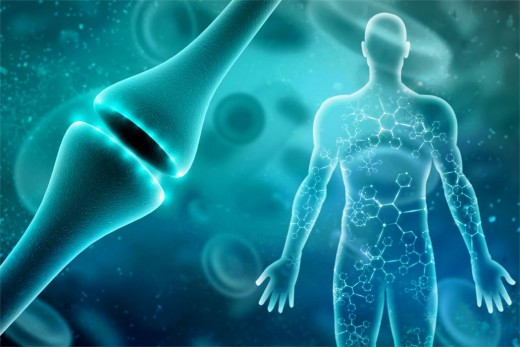
How Does It Act On The Body?
Cannabinoids like CBG, CBD and THC act on the body's endocannabinoid system (aka ECS system). Among a host of other things the ECS system regulates sleep, appetite and immune response in the human body. The ECS affects the human by acting on nervous system via cannabinoid receptors located in the brain and nervous systems and various portions of the immune system. For simplification, we can assume there are two main types of cannabinoid receptors, CB1 and CB2. CB1 receptors are localized near the brain and nervous system while CB2 receptors are localized near or as part of the immune system.
Although CBG can interact with both CB1 and CB2 receptors, it has a preference to interact with CB2 receptors. Interaction with these receptors at key areas of the body can have a host positive effects including improved pain response, improved appetite, and enhanced mood just to name a few.
What Does The Future Hold?
As you may have guessed, research into the various therapeutic and medical uses of cannabigerol and other cannabinoids has seen explosive growth in recent years. And while sales figures for CBD products and applications are hard to pin down, we can look to CBD sales to get clue. See figure. 1 below.
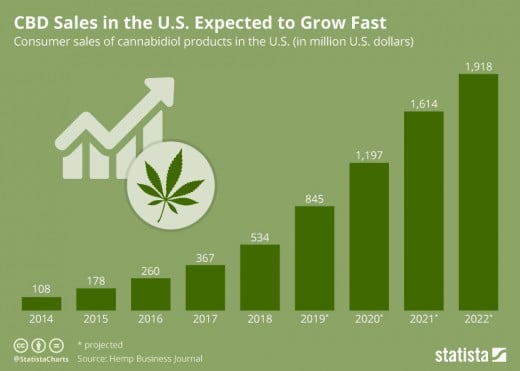
As we can see the most popular cannabinoid CBD eclipsed $400 million is product sales in 2018. Furthermore, the total market is expected to reach nearly 2 billion dollars by 2022. Due to having some of the advantages and benefits of CBD, this writer believes CBG will be king cannabinoid in the new decade. Guess we'll just have to wait and see.
The Synergy of Full Spectrum
Whatever your opinion of CBG or CBD, it is important to understand that many compounds in the cannabis sativa plant work "synergistically" to modulate, reconfigure and benefit your body. Many cannabis related sites on the web refer to this cannabinoid cohesion as the "entourage effect." For instance, non-psychoactive terpenes found within the cannabis plant are thought to greatly improve the therapeutic effects of cannabinoid compounds.
A Final Note:
Due to a lack of comprehensive research and lack of general knowledge about any adverse effects, it is important state that before adding CBG to your daily nutritional/wellness routine.....Please Consult With Your Doctor. It is always better to be safe than sorry.



